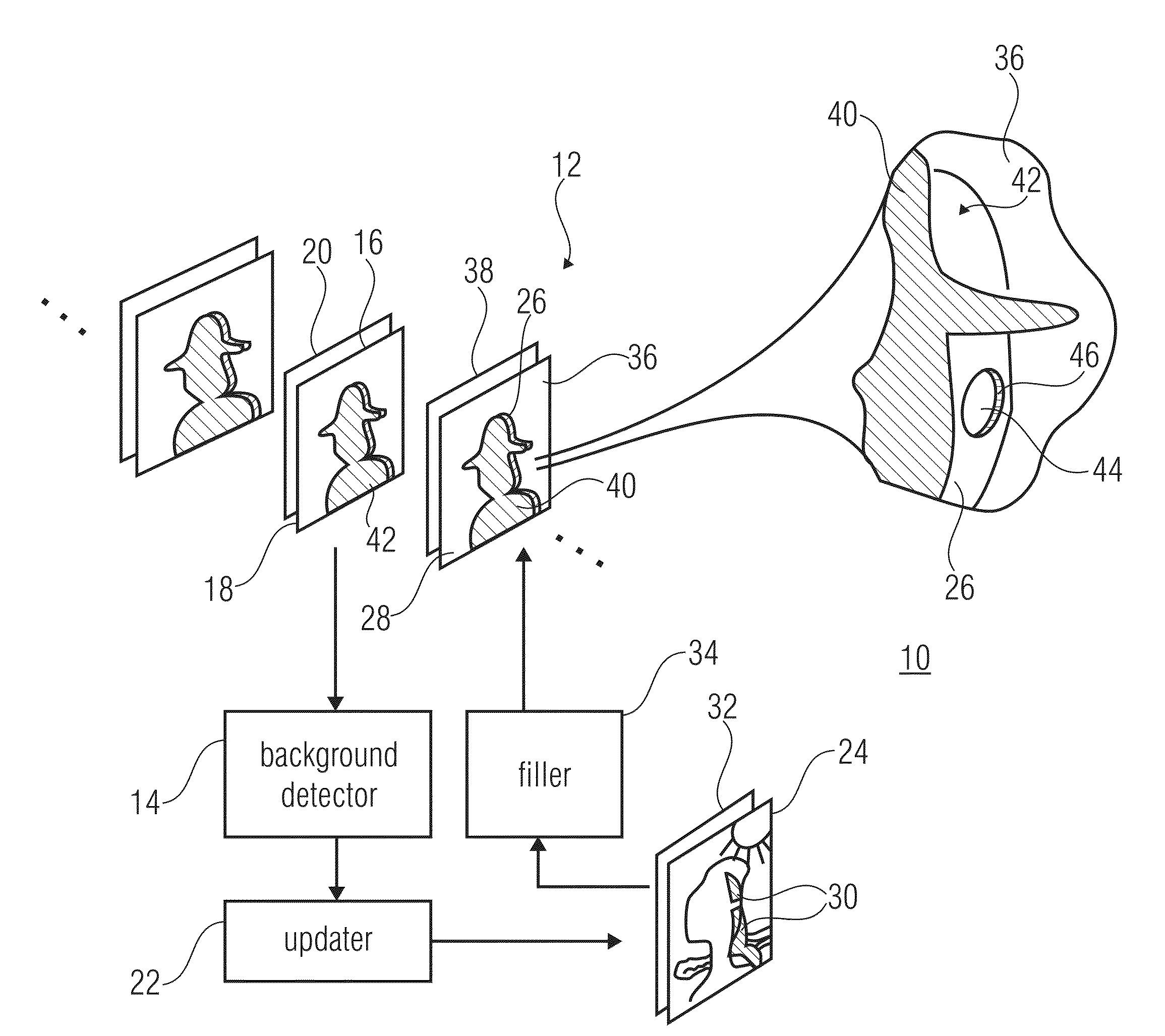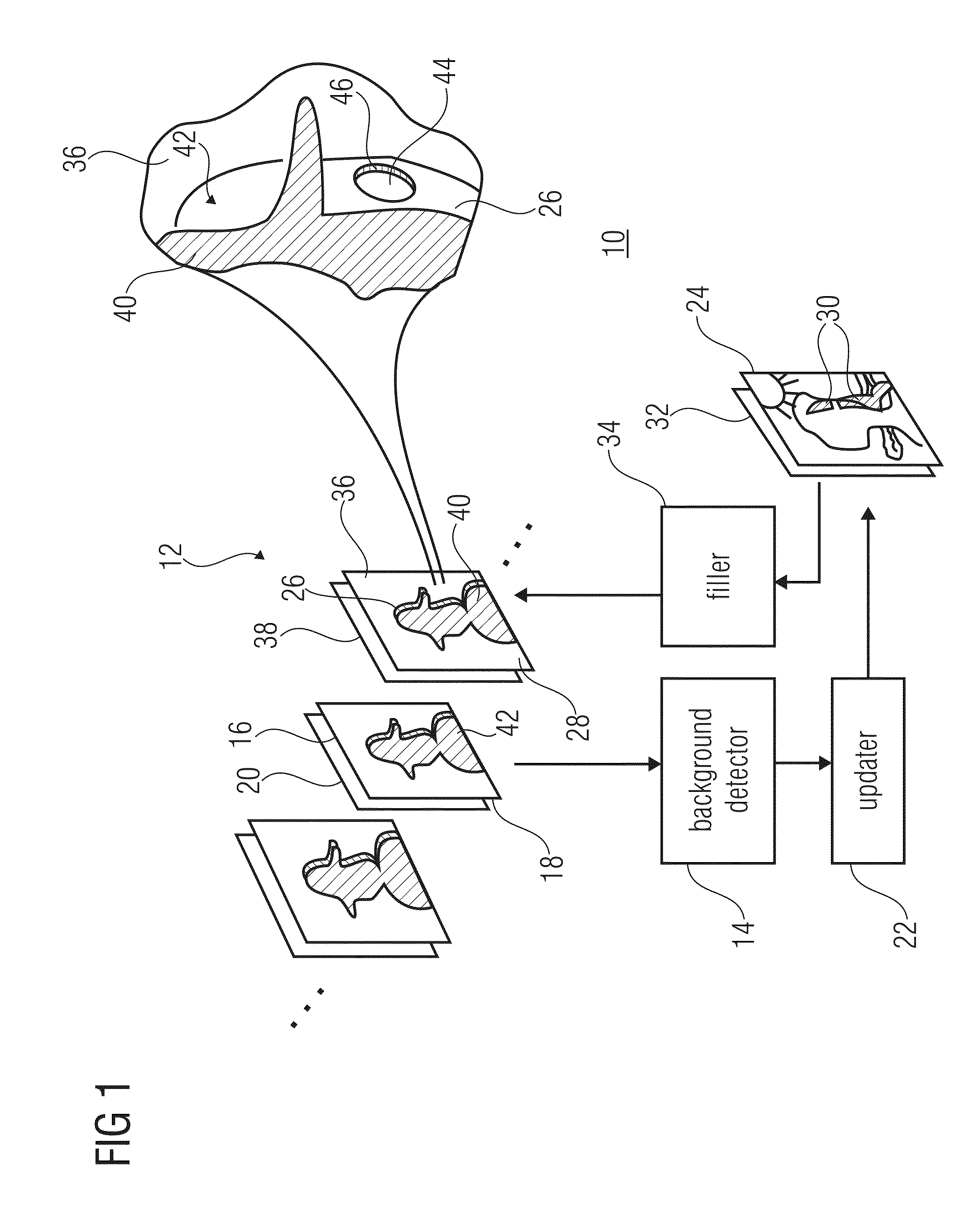Filling disocclusions in a virtual view
a virtual view and disocclusion technology, applied in the field of filling disocclusions in virtual views, can solve the problems of only supporting small baselines for rendering, limited number of original views that can be stored and transmitted, and the generation of exposures for synthesis of new views, so as to achieve plausible patch-based filling results
- Summary
- Abstract
- Description
- Claims
- Application Information
AI Technical Summary
Benefits of technology
Problems solved by technology
Method used
Image
Examples
Embodiment Construction
[0039]In the following, a temporally consistent concept of filling disocclusions with texture synthesis for depth-image-based rendering is described, or, in other words, a occlusion filling scheme of a first alternative.
[0040]FIG. 1 shows an apparatus 10 for filling disocclusions in a virtual view video 12. The apparatus comprises a background detector 14 configured to identify a background portion 16 of a first virtual view image 18 of the virtual view video 12 based on a depth / disparity map 20 associated with the first virtual view image 18. Further, the apparatus 10 comprises an updater 22 configured to update a background sprite image 24 based on the background portion 16 of the first virtual view image 18, and a filler 34 configured to fill a disoccluded area 26 of a second virtual view image 28 of the virtual view video 12 based on a corresponding portion 30 of the background sprite image 24.
[0041]As will become more clear from the following discussion, the background sprite i...
PUM
 Login to View More
Login to View More Abstract
Description
Claims
Application Information
 Login to View More
Login to View More - R&D
- Intellectual Property
- Life Sciences
- Materials
- Tech Scout
- Unparalleled Data Quality
- Higher Quality Content
- 60% Fewer Hallucinations
Browse by: Latest US Patents, China's latest patents, Technical Efficacy Thesaurus, Application Domain, Technology Topic, Popular Technical Reports.
© 2025 PatSnap. All rights reserved.Legal|Privacy policy|Modern Slavery Act Transparency Statement|Sitemap|About US| Contact US: help@patsnap.com



